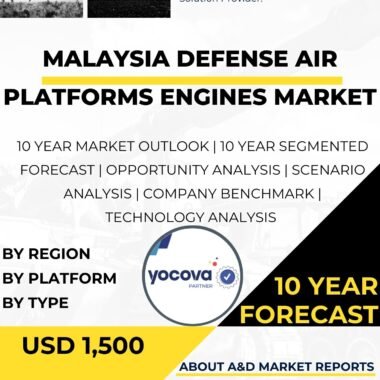Description
Canada’s defense air platforms engines are critical components of the country’s military aviation capabilities. These engines power a wide range of aircraft, including fighter jets, transport planes, helicopters, and unmanned aerial vehicles (UAVs). With a focus on performance, reliability, and technological innovation, Canada’s defense air platform engines represent a vital aspect of the nation’s defense strategy.
The development and procurement of defense air platform engines involve close collaboration between Canadian aerospace companies and global engine manufacturers. This partnership ensures that Canada’s military aircraft are equipped with cutting-edge propulsion systems that meet the demanding requirements of modern air operations.
One of the key aircraft in the Canadian Armed Forces’ fleet is the CF-188 Hornet, which is powered by twin engines. These engines provide the Hornet with the thrust and maneuverability required for air superiority missions, air defense, and ground attack operations. The CF-188’s engines are designed for performance in various conditions, allowing the aircraft to operate effectively in different theaters of operation.
For transport and logistical missions, Canada relies on aircraft such as the Lockheed C-130 Hercules. The C-130 is equipped with robust turboprop engines that enable it to carry out airlift operations, troop transport, and cargo delivery to remote locations. These engines are engineered for fuel efficiency and long-range capabilities, ensuring the C-130’s ability to execute extended flights and sustain critical operations.
In the realm of rotary-wing aircraft, Canada’s fleet of helicopters relies on a variety of engines to power different platforms. For instance, the CH-146 Griffon, which serves in roles such as tactical transport and reconnaissance, is equipped with twin-engine propulsion systems to ensure redundancy and safety during operations.
Moreover, Canada’s fleet includes the CH-148 Cyclone maritime helicopters, which are designed for anti-submarine warfare and search-and-rescue missions. These helicopters are powered by state-of-the-art engines that provide the required power and performance for naval operations.
Unmanned aerial vehicles (UAVs) play an increasingly important role in modern military operations. Canada deploys UAVs with a range of engines, from piston-powered engines for small surveillance drones to jet engines for high-altitude and long-endurance UAVs. The versatility of UAVs allows the Canadian Armed Forces to conduct intelligence, surveillance, reconnaissance, and target acquisition missions effectively.
The selection of defense air platform engines considers factors such as fuel efficiency, reliability, maintainability, and environmental impact. Modern engines are engineered to optimize fuel consumption, thereby reducing operational costs and enhancing mission endurance. Reliability is crucial to ensure the availability of aircraft for operational readiness, as well as for safety during missions.
In line with Canada’s commitment to environmental sustainability, defense air platform engines are developed with a focus on minimizing emissions and adhering to stringent environmental regulations. Engine manufacturers invest in research and development to enhance engine efficiency and reduce the environmental footprint of military aviation.
To maintain the peak performance of defense air platform engines, the Canadian Armed Forces follow rigorous maintenance and overhaul procedures. These measures involve periodic inspections, component replacements, and adherence to maintenance schedules specified by engine manufacturers. The goal is to ensure that the engines operate at their optimal performance levels throughout their service life.
The defense air platform engine sector also contributes to the Canadian economy by providing employment opportunities and fostering technological advancements. Collaborations between Canadian companies and international engine manufacturers allow for knowledge transfer and skill development, contributing to the growth of the domestic aerospace industry.
Moreover, Canada’s engagement with international engine manufacturers fosters strategic partnerships, enabling access to the latest advancements in propulsion technology. These collaborations enhance Canada’s defense capabilities and provide opportunities for joint research and development, benefiting both Canadian and global aerospace industries.
In conclusion, Canada’s defense air platform engines are integral to the nation’s military aviation capabilities. From fighter jets to transport planes, helicopters, and UAVs, these engines power a diverse array of aircraft employed by the Canadian Armed Forces. Engine manufacturers, in close cooperation with Canadian aerospace companies, continue to innovate and deliver cutting-edge propulsion systems that meet the demands of modern air operations. With a focus on performance, reliability, and sustainability, Canada’s defense air platform engines play a pivotal role in ensuring the nation’s security and readiness to address emerging threats and challenges.




